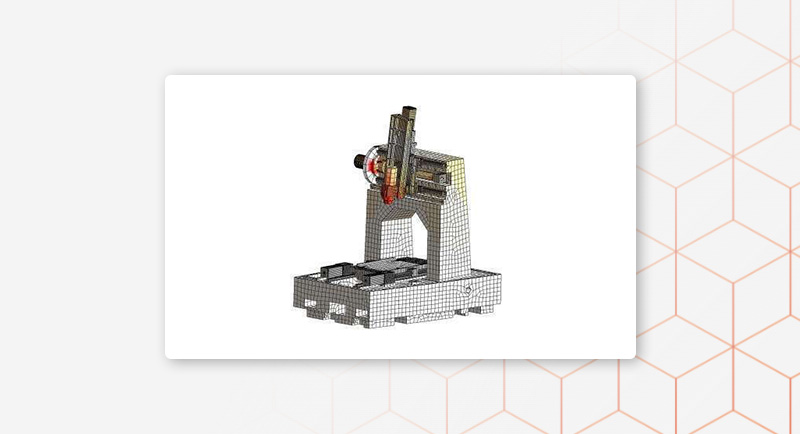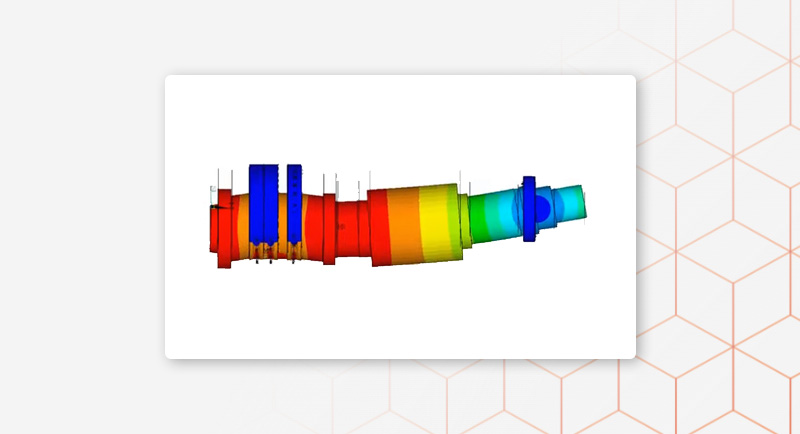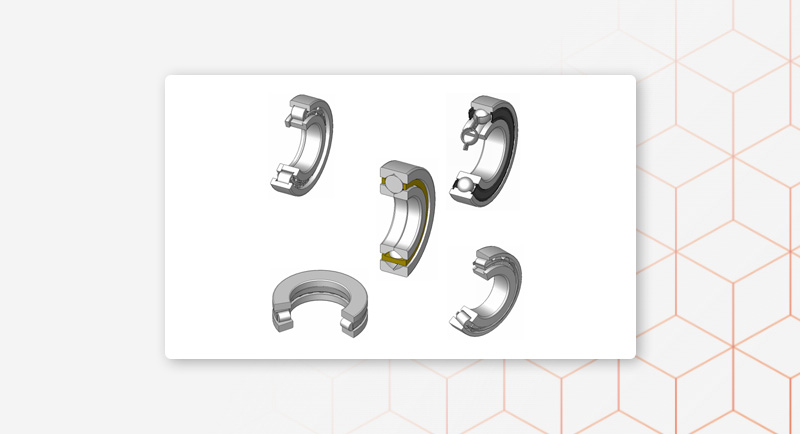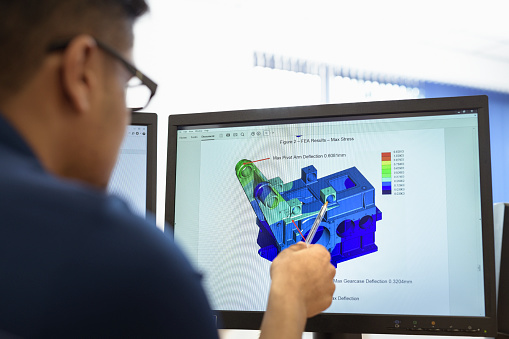In a previous blog article I wrote about the parallel development of the CAD and FEA programs.
From what has been said, one could also draw the following conclusion:
In the beginning, 3D CAD programs were too expensive and too slow to use. Then these became commonplace.
FEA programs were even rarer and, if we're honest, even until the turn of the millennium, applied only rarely and in a highly localized manner.
In addition, the manufacturers of CAD programs and those of FEA programs were always different companies that had little to do with each other.
At some point, CAD manufacturers started thinking about additional markets and discovered FEA. Slowly but surely, more and more existing FE solvers were linked to the respective CAD programs so that data (geometry, FE mesh and results) can be exchanged between the two worlds. The CAD interfaces have been expanded to include additional graphic elements for FE model creation and evaluation.
This historical further development of CAD programs meant that a significantly broader group of users suddenly had access to the world of FE analysis. If I think back to my industrial experience 20 years ago, even in large mechanical engineering companies, an entire development department consisted of fifty CAD designers, but only one FEA engineer. And the absolute majority of other medium-sized companies had no FEA people at all.
This makes it clear what an invisible, silent revolution has been set in motion by the expansion of CAD programs with FEA functions. Interestingly, this revolution continues its development to this day, so I'm not so sure I should necessarily call it a revolution. Anyway, this is a slow revolution.
However, the introduction of FEA into the CAD world also had another important side effect: FEA manufacturers were put under massive pressure. Before that, FEA was a tool for absolute specialists. In companies, these were always the colleagues who you never understood what they did all day anyway. Suddenly every designer, no matter how inexperienced they were with FEA, could now create the “beautiful colorful pictures”.
As a long-time former FEA nerd, I have to admit that at the beginning, like many others, I thought: This can't work. Today, however, as befits a self-organizing system, the market has solidified. The users know the limits of applicability and use the software tools sensibly. On the one hand, there are designers who occasionally use the CAD extension for simple FE analyses. And they are now very aware that there are limits and these cannot be exceeded by the CAD extension. On the other hand, there are still the long-standing FEA specialists. Some companies employ a permanent FEA specialist for this purpose. Many others, on the other hand, rely on external service providers. “They know what they’re doing,” to quote a frequently heard phrase.
Now I come back to the FEA manufacturers. I suspect that the advances from the CAD area have triggered a certain rethinking in them. Before that, the FEA saw itself as a tool for experts. Now you had to admit, whether you wanted it or not, that these times will soon be over. A period of modernization of the graphical interfaces of the FEA programs began. For example, Ansys made a significant leap with the introduction of Ansys Workbench around 15 years ago. The graphical interfaces of FEA programs are now increasingly based on those of CAD programs in order to make them as palatable as possible for CAD users.
In short: CAD programs have integrated more and more FEA, while FEA programs have integrated more and more CAD.
Personally, however, I have noticed another point that is likely to be crucial for further development in these areas: CAD extensions are still dedicated to simple simulation tasks, pure FEA programs to experts. Now all the FEA and CAD manufacturers will jump up in outrage and contradict me. All I can say is: Sit back down, that's not what it means. First of all, I'm just talking about the subjective perception of the end user. I know them very well because I get to talk to many of them every day.
So if we first accept the opinion of the users, then the question arises: Why is that the case? What differentiates a CAD extension for FE analysis from dedicated FEA software? And why does the convergence of CAD and FEA programs continue for so long? Will this approach converge at some point so that there are only CAX programs that do both wonderfully?
My personal opinion is that FEA, by its nature, requires a lot of knowledge from the user. I don't necessarily mean FEA-specific knowledge. Rather, I mean a deep, technical, mechanical and physical understanding.
Now the strategy of the CAD manufacturers when developing FEA extensions was this from the start: user-friendliness by eliminating features. This is somewhat similar to what is at the forefront when developing smartphone apps. Now, this strategy can only work to a limited extent in the FEA world. As long as the task to be simulated fits into the given framework, everything is fine. For all other cases you need the expert programs.
For the FEA manufacturers, on the other hand, the development strategy was to "beautify" the graphical interface while maintaining the same wealth of features. This is great for the FEA nerds, because their “old” playground remains intact. However, for less experienced CAD users, many questions remain unanswered and there is a lot of uncertainty in the application. So it's more about the questions: which of the many options can I use and under what conditions? Or more fundamentally: What am I allowed to do with the program and what am I not allowed to do?
As you can see, the difficulty is that an FE program cannot replace the necessary understanding. Simply foregoing features does not solve everything.
So where do we as Meshparts see ourselves in this global development? Well, Meshparts was born out of the urge to rethink. Our special approach to FE modeling allows our customers to do more simulation with less specialist knowledge. At this point I would just like to briefly mention our FE model library and the CAD twin. This allows the user to concentrate more on the actual simulation task. However, we see the need to keep FEA strictly separate from CAD. This may sound surprising, but please don't misinterpret it. We want to offer a CAD-independent solution that can communicate perfectly with any CAD software. Using the CAD twin, we achieve perfect symmetry between FEA and CAD. FE models can be created automatically via the PDM connection. Changes to the CAD model are automatically transferred to the FE model.
Since a picture is worth a thousand words, and a video even more, I would like to finally illustrate the whole thing with a video. Below you can see the perfect symbiosis between a CAD program (SolidWorks in this case), Meshparts and RISTRA (the GPU-based, live solver from Fraunhofer IGD). The video was recorded on three screens; but it would work just as well with two. Watch video
The interesting thing about this video is, on the one hand, the speed with which RISTRA calculates on the graphics card. On the other hand, the CAD user remains in his usual CAD environment the entire time and can observe the stresses in the component live on another screen. With this in mind, I look forward, as always, to your feedback on the article and see you next time.







